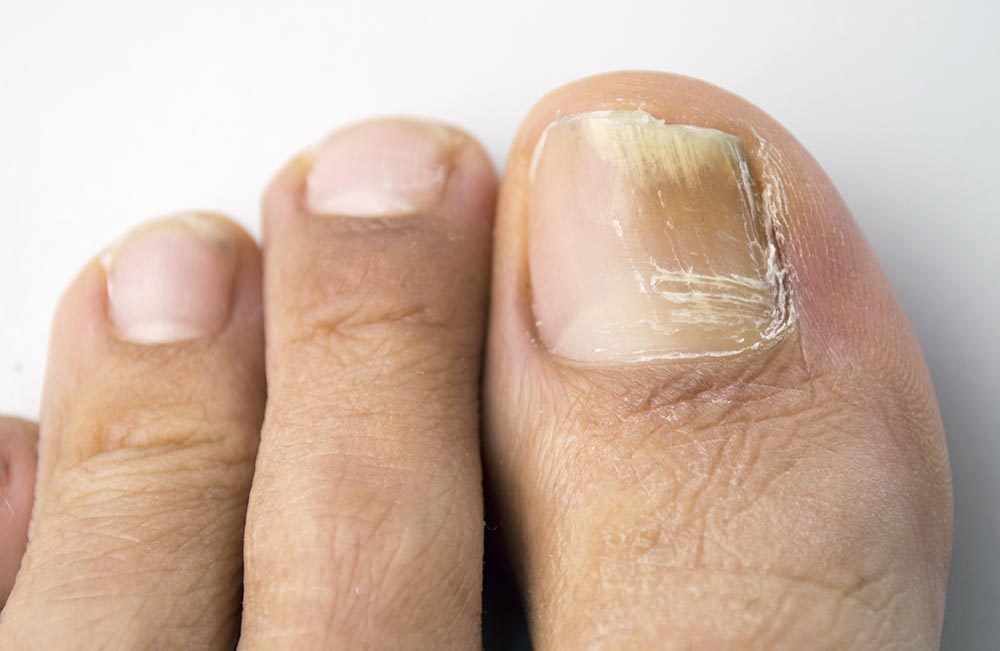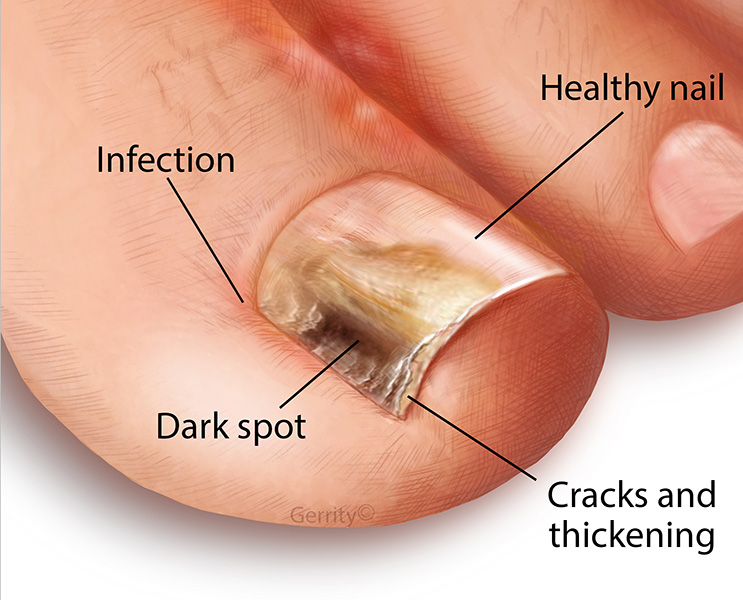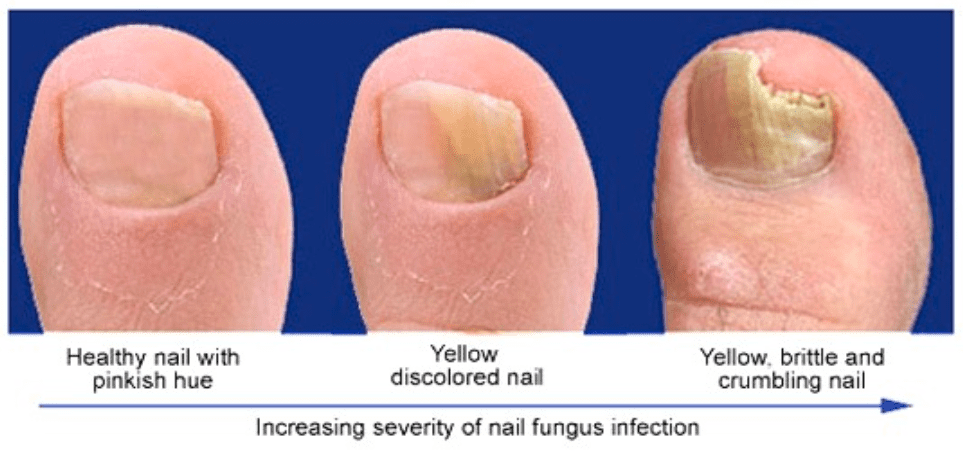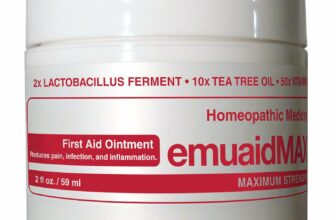

Let’s face it – nobody wants to have to deal with such an unpleasant condition as toenail fungus. And though, in the majority of cases, the infection won’t end up leading to dreadful consequences, it’s still not nice to have your nails look and feel strange.
Unfortunately, toenail fungus is extremely contagious. You can easily get it through direct contact with an infected person, through infected household objects and surfaces, and even through animals (though the latter is very rare).
Let’s dive deeper into the topic and find out how toenail fungus is treated and what you can do to prevent this condition.
Is Toe Nail Fungus Contagious?
If you’re asking yourself ‘Is toenail fungus contagious?’, you won’t be happy to find out that in reality, this condition is extremely contagious. In fact, you can easily transfer the microorganisms by sharing a towel or socks with someone or walking over an infected surface. This is how the fungi will get transferred. And, later on, these organisms can cause an infection.
So, in a nutshell, it would be correct to say that fungus is contagious, but fungal infection is not.
By the way, if you have a toenail infection, you can, of course, transfer it to other individuals. But something that a lot of people tend to forget about is that the infection from one toenail can easily get ‘passed on’ to the other toenails and even your fingernails. So, make sure to start the treatment as soon as you notice something strange happening with your nails or you might have to treat not 1 or 2 nails, but 20.
Though a toenail fungal infection will typically cause only minor inconveniences in healthy people, it might become dangerous if an individual with diabetes or a weakened immune system gets infected.
What Are the Signs of Toenail Fungus?

A fungal infection will cause your toenails or fingernails to become thick, crumbly, and odorous. The affected nails will also change color. They can become yellowish, for example. White spots on nails are quite common among people who have a fungal infection as well.
If the most severe cases, the fungus can cause the nails to separate from the nail beds and it might permanently affect the shape and even the growth rate of the nails.
You are more at risk of contracting a fungal infection if your nail has been injured or if you have weakened immunity, circulation problems, or artificial nails. Those who are older than 65 years are also at greater risk. With that being said, anyone who wears enclosed shoes or tends to go to a public swimming pool can get fungus. That’s why we’ve gathered this information and tons of foot care information in this your Havidol website.
Stages of Toenail Fungus

There are a few different stages of toenail fungus. Do bear in mind that no matter what stage you’re going through, the condition needs to be treated. If you have managed to begin the treatment during the first stage, then the chances are high that you wouldn’t have to spend as much time and effort on dealing with the issue.
- Stage 1
The nail plate still looks shiny and transparent, but you’ve started to notice yellow or white spots.
- Stage 2
The nail plate is no longer glossy and transparent and there are yellowish spots on the entire surface of the nail. You can see that a part of your nail is getting ‘destroyed’.
- Stage 3
The nail has become a lot thicker than it used to be. You have noticed that the nail plate has started to separate from the nail bed in some places and that the nail is crumbling whenever you try to trim it.
Many people already have fungus present on their bodies. But the microorganisms won’t start multiplying until the environment is just right. As fungus thrives in moist and warm environments, wearing enclosed shoes and not changing your socks often enough can cause the microorganisms to multiply which, in its turn, can lead to the development of a fungal infection.
What Causes Nail Fungus?
Nail fungus is caused by tiny organisms, fungi, that are usually found lurking in dark, moist places. Once you come in contact with the fungi, they can easily infect your nails by getting inside around the edges or through small cracks. Fungi can invade both toenails and fingernails, but the latter don’t get affected as often.
The infection is typically caused by a unique type of fungi – dermatophytes (they cause 90% of toenail fungal infections). They can be found in the soil and the skin of animals and humans. By the way, these are the fungi that can also cause ringworm and fungal scalp infections.
The good news is that you shouldn’t be afraid of this infection spreading to other parts of your body and organs. Dermatophytes require keratin to survive, that’s why they live on the skin, nails, and hair.
But how exactly can you get this fungus? Typically, it spreads through:
- Infected surfaces (like damp floors, for example)
- Such common household objects as clothes and towels (basically, anything that touches our toes)
- Direct contact with the person who has toenail fungus
- Animals (some types of fungus can be spread from animals to humans, but this kind of transmission is extremely rare)
How to Treat Toenail Fungus

If you suspect that you have a toenail infection, you would have to pay a visit to a podiatrist or a dermatologist. These doctors have been trained to diagnose and treat nail fungus correctly, and they can also conduct laboratory testing if needed.
Depending on the extent of the problem, the specialist might prescribe you oral antifungal medication, topical creams that need to be applied directly to the affected areas, medicated nail polish, or sprays.
Do bear in mind that in some cases, you would have to continue treating the fungus for around 3 months. Make sure to follow all the instructions that the doctor would give you, otherwise, you might not be able to eliminate the problem completely.
If you have third-stage toenail fungus, the doctor might decide to remove the nail completely. It will typically take the toenail over 12 months to grow out.
How to Prevent Toenail Fungus
Unfortunately, there is no quick way to deal with toenail fungus. In the absolute majority of cases, you would have to spend months treating the issue. So, ideally, you would want to prevent the condition from occurring in the first place.
The good news is that it’s quite easy to prevent nail fungus. All you would have to do is follow these simple pieces of advice.
- Avoid walking barefoot, especially in such public places as locker rooms and swimming pools. Remember that fungi love dark and moist spots.
- Wash your hands and feet on a regular basis. If you suspect that you might have come in contact with an infected surface, wash your feet again.
- Do your best to try and keep your feet dry. As we have already mentioned, fungi thrive in a moist environment. So, if you can, take a fresh pair of socks with you to get them changed during the day. Also, opt for pairs that are made out of 100% cotton. Furthermore, you should not forget to thoroughly dry your feet after having a shower before putting on your shoes or socks, even if you’re in a hurry.
- If you know that you’re prone to skin fungal infections, you can consider using special antifungal cream in the toe web spaces (the perfect ‘hiding spot’ for the fungi).
- Do not share your towels with anyone else (even family members) and wash them on a regular basis.
- Choose your shoes wisely. Go for high-quality materials that ‘breathe’. This will help keep your feet dry throughout the day.
- Make sure to disinfect your best nail clippers and any other tools that you use on your nails before and after giving yourself a mani or a pedi. If you tend to go to a salon, then ensure that the nail tech uses only disinfected equipment. If you’re not sure about whether or not the tool got properly cleaned, don’t be afraid to point it out to the technician. By the way, if you’re looking for other nail clippers yourself, then you might want to check out these cheap Revlon nail Clippers reviews.
- Inspect your toenails regularly. If you have spotted something suspicious, take action straight away. Do not wait for the issue to miraculously go away on its own.
Final Thoughts
So, is toe fungus contagious? Unfortunately, the fungus is very contagious. And the fact that it affects 1 out of every 10 people makes things even worse as you can easily get infected when coming in contact with common household objects and moist surfaces.
Though the actual treatment of the condition is not complicated at all, it might take a few months. So, trying to prevent the fungal infection from occurring in the first place is the best thing that you can do, and if you follow the tips mentioned above, you can rest assured that your toenails will stay healthy and pretty.






